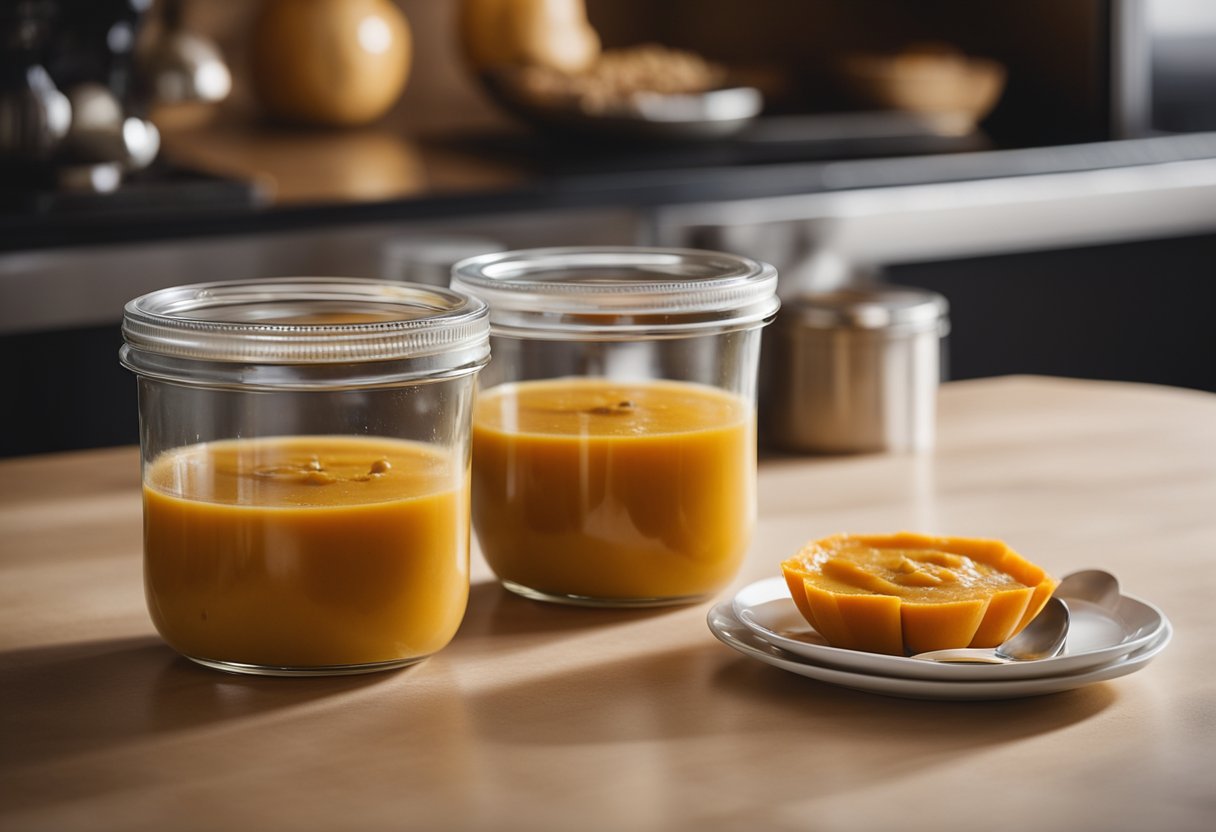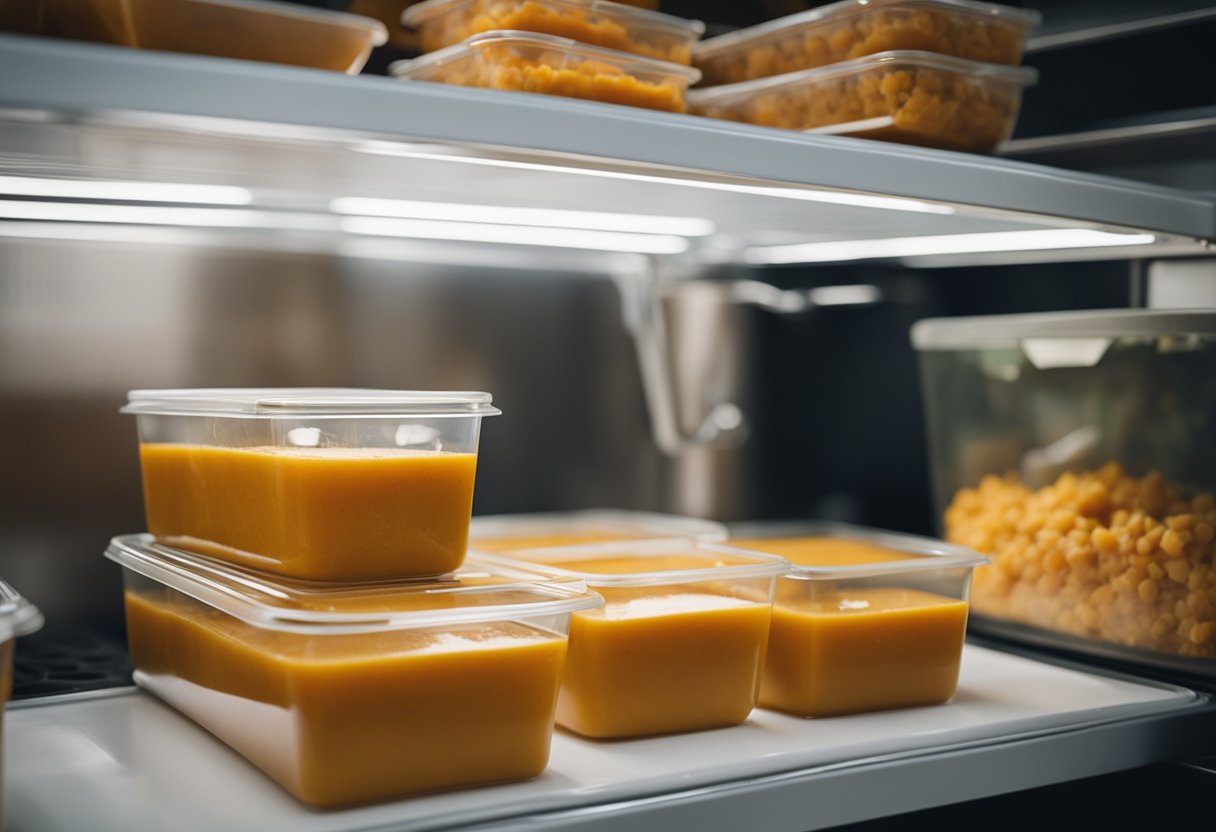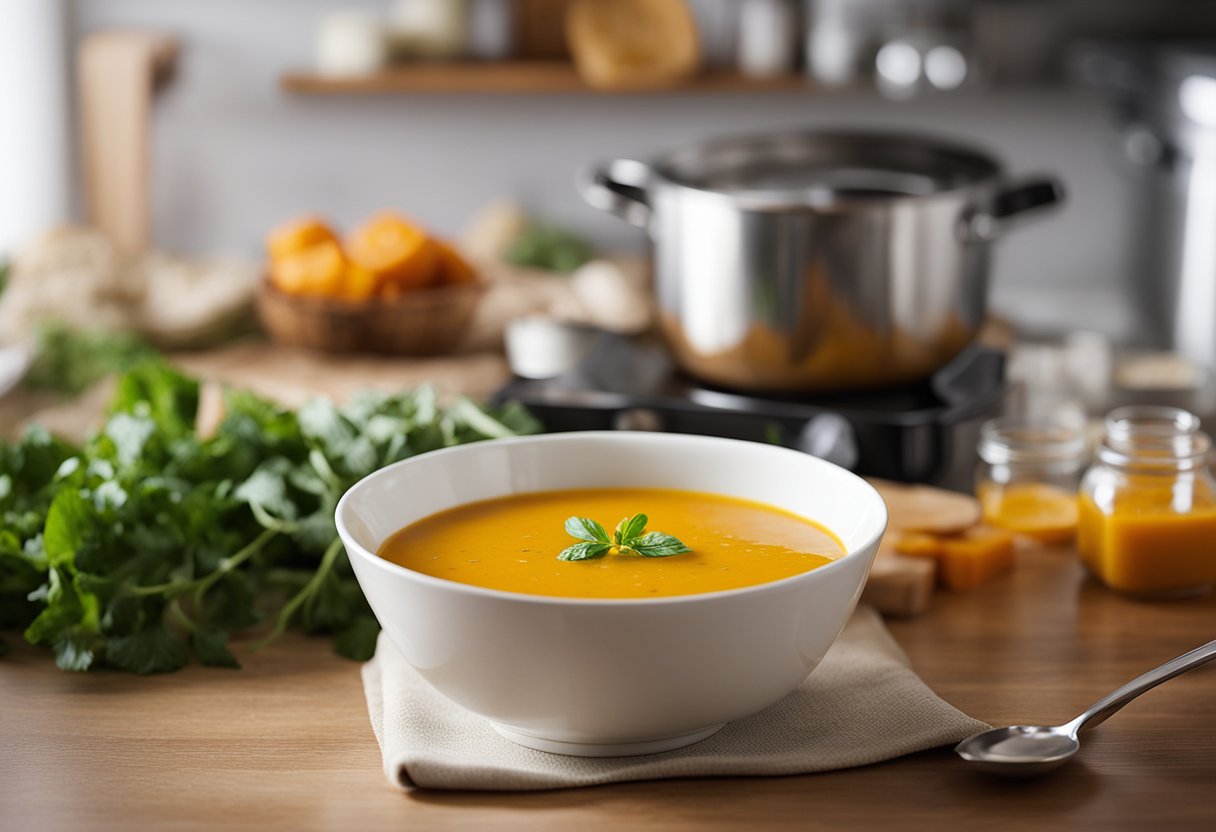As the leaves turn golden and the air gets crisper, nothing quite says fall like a hearty bowl of butternut squash soup. Its creamy texture and sweet, nutty flavor make it a beloved dish for many, especially when the holiday season starts to peak around Thanksgiving.

However, you might find yourself with more leftover butternut squash soup than you can handle after the festivities wind down. Throwing it out is not the only option. There are creative and delicious ways to repurpose your leftover soup into new meals, ensuring nothing goes to waste and your taste buds remain happy.
With a little ingenuity, your leftover butternut squash soup can transform into an array of surprising dishes, from sauces and pastas to stews and casseroles. This can be a delightful way to extend the flavors of fall and winter into your post-Thanksgiving meals, giving a second life to your leftover soup.
Elevating Your Soup

You can transform your butternut squash soup from simple to sensational with the right aromatic touches. Herbs and spices are your best friends here!
Incorporate Fresh Herbs and Spices
Fresh herbs can add a new dimension of flavor to your butternut squash soup. When you add herbs, be sure to do so near the end of the cooking process to preserve their vibrant flavor and color. Here are some specific herbs and spices you might consider integrating to elevate your leftover soup:
- Sage: A few fresh sage leaves can impart a subtle, earthy flavor.
- Rosemary: Its piney aroma complements the sweetness of squash perfectly.
- Thyme: This herb offers a slight minty and peppery taste that enhances the soup’s complexity.
For spices, a small pinch can go a long way. They’re best added during the heating process, allowing their flavors to meld seamlessly with the soup. Consider the following:
- Black Pepper: A classic spice that brings a sharp heat and works with almost any soup.
- Cayenne Pepper: Perfect if you’re looking to add a little spicy kick.
- Smoked Paprika: Gives a lovely smoky depth to the sweetness of butternut squash.
- Paprika: Adds a sweet pepper flavor without too much heat.
- Turmeric: Introduces an earthy bitterness and vibrant color.
- Cinnamon: A dash can contribute a warm and sweet nuance.
When experimenting with herbs and spices, start with a small amount and adjust according to your taste preferences. Mix and match to find your perfect soup elevation.
Creative Leftover Transformations

Transform your leftover butternut squash soup into delightful new dishes that will surprise and satisfy. These easy ideas will help you give a second life to your soup for any meal of the day.
Main Dish Makeovers
Turn your leftover soup into a heartwarming main dish. Protein-packed Butternut Casserole: Layer your soup with cooked pasta, shredded cheese, and chunks of crispy bacon in a casserole dish. Bake until bubbly and golden for a comfort dish that’s brimming with flavor.
Side Dishes with a Twist
Elevate your sides with a butternut twist. Roasted Butternut Mac & Cheese: Blend your soup with a creamy cheese sauce and pour over cooked macaroni. Top with breadcrumbs and bake for a satisfyingly cheesy and slightly sweet side dish.
Breakfast Ideas
Leftover soup for breakfast? Absolutely! Squash Breakfast Hash: Mix your butternut squash soup with cubed roasted potatoes and cook until slightly crispy. Serve with a side of scrambled eggs or fold into an omelet for a warm, fulfilling start to your day.
Proper Storage Techniques

Storing leftover butternut squash soup properly maintains its flavor and safety. Your soup can stay fresh and delicious with the correct refrigeration or freezing methods.
Refrigeration Best Practices
Duration: It’s best to refrigerate your butternut squash soup within two hours of cooking. Properly chilled, it can last for 3 to 4 days in the fridge.
Containers: Use an airtight container to store the soup in the fridge. Glass containers or BPA-free plastic containers with tight lids work well for this purpose.
- Before sealing the soup, let it cool to avoid condensation which could lead to spoilage.
- Always label your container with the date you stored the soup.
Freezing for Future Use
Preparing for the Freezer: Ensure that your soup is completely cool before you plan to freeze it.
Packaging: Pour the soup into freezer-safe airtight containers or heavy-duty freezer bags. Leave about an inch of space at the top as the soup will expand when frozen.
- For individual servings, consider freezing the soup in an ice cube tray, then transfer the frozen cubes into a freezer bag.
Thawing and Reheating:
- To thaw, leave the frozen soup in the fridge overnight.
- When you’re ready to eat, reheat the soup on the stove over low heat or use a microwave with a microwave-safe container. Stir occasionally to ensure even heating.
Nutrition and Health Benefits

Your leftover butternut squash soup isn’t just delicious; it’s packed with nutrients that can benefit your health. Let’s explore the nutritional content that makes this soup a great addition to your diet.
Dietary Considerations
Butternut squash soup provides a host of nutritional benefits that are essential for maintaining a healthy diet. Here’s a breakdown of what you can expect from a standard serving of this hearty soup:
- Vitamins & Minerals: Butternut squash is high in vitamins A and C, vital for immunity and skin health, and minerals like potassium and magnesium.
- Fiber: A bowl of butternut squash soup is a good source of dietary fiber. Fiber helps in maintaining digestive health and can contribute to a feeling of fullness, aiding in weight management.
- Low in Calories: The soup is generally low in calories, which is beneficial if you’re monitoring your calorie intake.
In terms of specific dietary preferences, here’s how butternut squash soup can fit in:
- Vegan-Friendly: If your soup is made without animal products, it’s a great vegan option as it relies on veggies and potentially plant-based creams.
- Protein: Although not high in protein, you can increase the protein content by adding ingredients like beans, lentils, or even a scoop of protein powder.
- Use of Coconut Milk: For a creamy texture without dairy, coconut milk is your friend. It’s a vegan alternative that adds richness while still keeping the soup plant-based.
| Nutritional Aspect | Benefit for You |
|---|---|
| Vitamins A & C | Boosts immunity and maintains skin health |
| Fiber | Promotes digestive health and satiety |
| Low Calories | Assists in weight management |
| Vegan Compatibility | Aligned with plant-based diets |
| Versatility in Protein | Customize to meet your protein needs |
By keeping these points in mind, you can enjoy your leftover butternut squash soup knowing it’s not just good, but good for you.
Frequently Asked Questions

Leftover butternut squash soup offers a wealth of culinary possibilities. Below, you’ll find creative ways to reinvent it across different dishes, ensuring nothing goes to waste.
How can I repurpose leftover butternut squash soup into a pasta sauce?
You can transform your butternut squash soup into a creamy pasta sauce. Simply simmer the soup until it thickens to your desired consistency and toss it with your favorite cooked pasta.
What recipes can I try using leftover butternut squash soup for muffins?
Incorporate the soup into muffin batter to add moisture and a subtle sweetness. Replace some of the liquid ingredients in your standard muffin recipe with the soup.
Is it possible to freeze leftover butternut squash soup and how?
Yes, you can freeze butternut squash soup. Cool it down, place it in a freezer-safe container leaving some space for expansion, and freeze.
Can I make curry using leftover butternut squash soup as a base?
Absolutely. Add curry spices, protein, and vegetables to the soup. Simmer until the flavors meld for a comforting curry dish.
How can I thicken my leftover butternut squash soup for a heartier texture?
Stir in a slurry of cornstarch and water, or add mashed potatoes or cooked white beans and blend until smooth for added thickness.
Are there health benefits to eating homemade butternut squash soup leftover?
Homemade butternut squash soup retains the squash’s nutrients, like vitamins A and C, and consuming it leftover ensures you get these benefits while minimizing food waste.
